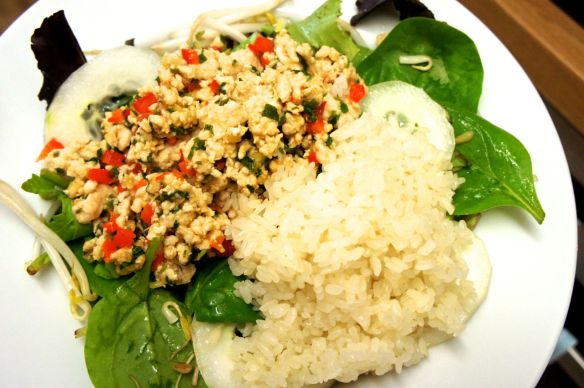Gung hay fat choy! It’s Chinese New Year… but it’s not just Chinese New Year. It’s also lunar New Year in many other countries including Singapore and Malaysia, which inspired tonight’s meal.
Beef rendang has always seemed a bit intimidating for me to make, because recipes usually call for a bunch of ingredients that are difficult for me to obtain, such as candlenuts and kaffir lime leaves, and call for the cook to grind their own spice paste and braise the beef for as long as four hours. However, I really wanted beef rendang, so after consulting a bunch of recipes, I figured it wouldn’t be too hard to make a rendang with the ingredients in my kitchen, in a lot less time. The result was truly delicious and tasted just like the rendang I’ve had in restaurants. I served it with steamed rice and yu sheng (Singapoean New Year salad) – and my husband declared it probably his favourite meal ever and half-jokingly asked me to make it once a week. Continue reading










